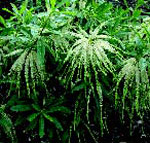Swamp Cyrilla: A Striking Native Shrub
go.ncsu.edu/readext?232802
en Español / em Português
El inglés es el idioma de control de esta página. En la medida en que haya algún conflicto entre la traducción al inglés y la traducción, el inglés prevalece.
Al hacer clic en el enlace de traducción se activa un servicio de traducción gratuito para convertir la página al español. Al igual que con cualquier traducción por Internet, la conversión no es sensible al contexto y puede que no traduzca el texto en su significado original. NC State Extension no garantiza la exactitud del texto traducido. Por favor, tenga en cuenta que algunas aplicaciones y/o servicios pueden no funcionar como se espera cuando se traducen.
Português
Inglês é o idioma de controle desta página. Na medida que haja algum conflito entre o texto original em Inglês e a tradução, o Inglês prevalece.
Ao clicar no link de tradução, um serviço gratuito de tradução será ativado para converter a página para o Português. Como em qualquer tradução pela internet, a conversão não é sensivel ao contexto e pode não ocorrer a tradução para o significado orginal. O serviço de Extensão da Carolina do Norte (NC State Extension) não garante a exatidão do texto traduzido. Por favor, observe que algumas funções ou serviços podem não funcionar como esperado após a tradução.
English
English is the controlling language of this page. To the extent there is any conflict between the English text and the translation, English controls.
Clicking on the translation link activates a free translation service to convert the page to Spanish. As with any Internet translation, the conversion is not context-sensitive and may not translate the text to its original meaning. NC State Extension does not guarantee the accuracy of the translated text. Please note that some applications and/or services may not function as expected when translated.
Collapse ▲
Cyrilla racemiflora
JC Raulston Arboretum ©
Cyrilla racemiflora, also known as swamp cyrilla, leatherwood or titi, is a lesser known but potentially useful native shrub or tree that grows in moist but well-drained soils that are high in organic matter and acidic. Growing in hardiness zones 6 through 11, its habit ranges from deciduous to semi-evergreen
to evergreen in the southern part of its U.S. territory. Reports indicate that it is deciduous or semi-evergreen in North Carolina and grows as a native primarily in the eastern part of the state.
The form of C. racemiflora somewhat resembles that of the wax myrtle, with twisted branches. And like the wax myrtle, it often forms multiple trunks. Taller specimens are found, but a typical height and width is 10 to 15 feet. While a single tree can be grown alone in a planted landscape, this shrub often spreads in moist soiled
natural areas, creating colonies. It has been reported to come back from the roots for some time after being cut. Its strong structure and glossy green leaves make it stand out in a landscape.
C. racemiflora flowers during the summer, putting out fragrant white-flowered racemes that are 3 to 6 inches long and give the appearance of downward pointed fingers. One-half inch long seed capsules form after flowering and remain on the plant into winter. Older leaves acquire fall coloration of yellow, orange and maroon. Swamp cyrilla is suited to full sun or partial shade.

Cyrilla racemiflora
JC Raulston Arboretum ©
This plant is not commonly found in nurseries, but it is easily propagated. Gardeners who have access to seeds can plant them directly into the ground. Cuttings taken in August and treated with the hormone IBA have rooted with great success.
The JC Raulston Arboretum has one swamp cyrilla specimen in the courtyard of the Ruby McSwain Education Center and two, including a weeping cultivar called ‘Graniteville’, in the beds along the fence in the northeast section. ‘Graniteville’, from Woodlanders Nursery in South Carolina, takes a more spreading form than wild plants and reaches only about 3 feet in height.
Mary H. Ferguson


